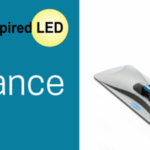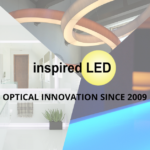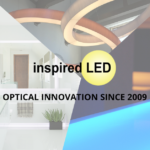At Inspired LED we strive to help our customers find the best lighting option to suit their needs, but we understand that not every Do-It-Yourselfer has time to become an LED expert! In lieu of taking courses in electrical engineering, we are happy to offer the following multi-blog miniseries; Inspired LED 101: A Quick and Easy Guide to LED Products.
Part 1: Components of an LED Strip
Let’s begin with a basic overview of what makes an LED system work. The individual LEDs, as you might expect, are responsible for distributing light, but like any lighting system, they rely upon a few other key components in order to function.
All of our LED products are made from the same basic parts; a series of LEDs and resistors are mounted to a printed circuit board. The circuit board of our flexible strip lighting, for instance, has two copper pathways that run horizontally from end to end; one positive track, and one negative track. When connected to a power supply, each copper strip acts as a conductor, allowing electrons to flow from one end to the other. The LEDs then create a plethora of paths for the electrical current to flow from the positive conductor to the negative conductor. For 12 volts, each path comprises 3 LEDs and a resistor, and thus the cut points will be found every 3 LEDs.![]()
The copper base pad is lined with a solder mask, a layer of polymer film, that protects the copper traces from unwanted connections. Only a few small areas remain exposed on the LED strip in order to allow the rest of the components to be attached. A special type of semiconductor device called a light emitting diode (better known as LED) is soldered strategically along the strip. As an electrical current flows through these semiconductors, they convert the energy into photons, or light!
A special type of semiconductor device called a light emitting diode (better known as LED) is soldered strategically along the strip. As an electrical current flows through these semiconductors, they convert the energy into photons, or light!![]()
One of the most important pieces is indeed one of the smallest. You’ll notice that after every third LED there is a tiny black component. This is a resistor. It serves to limit the flow of electrons along the strip, ensuring that each LED receives only the optimal amount of current for function and longevity.![]() One segment of Inspired LED flex is comprised of three LEDs and a single resistor. Each segment is separated by an exposed section of copper that looks a bit like an equal sign. This is known as a cut-point, because it can be used as a place to safely terminate the LED strip. It is also sometimes referred to as a connect-point, because this is where additional components, such as an end connector, can be attached. Once an end connector has been secured to one or both ends it is as easy as plugging in a power supply and voila! Let there be light…
One segment of Inspired LED flex is comprised of three LEDs and a single resistor. Each segment is separated by an exposed section of copper that looks a bit like an equal sign. This is known as a cut-point, because it can be used as a place to safely terminate the LED strip. It is also sometimes referred to as a connect-point, because this is where additional components, such as an end connector, can be attached. Once an end connector has been secured to one or both ends it is as easy as plugging in a power supply and voila! Let there be light…
The more you know about your new LED system, the better prepared you will be to install and manage it in the future! If you are interested in putting together your own LED lighting system or using one of our handy DIY kits, visit our website at www.inspiredled.com. Or, to take the guesswork out of the process completely, contact our design services team for a free product layout by emailing design@inpiredled.com.




